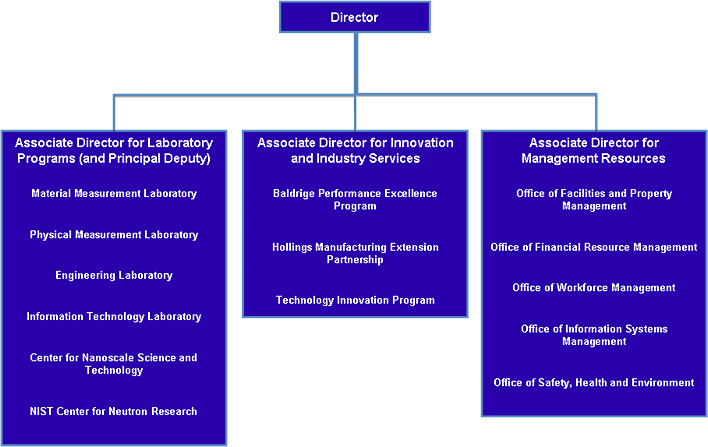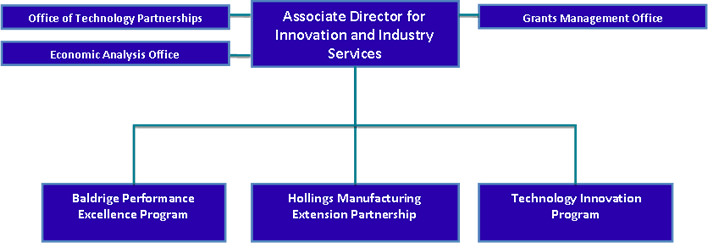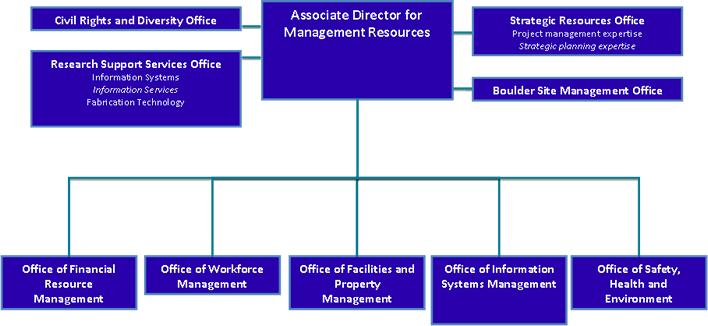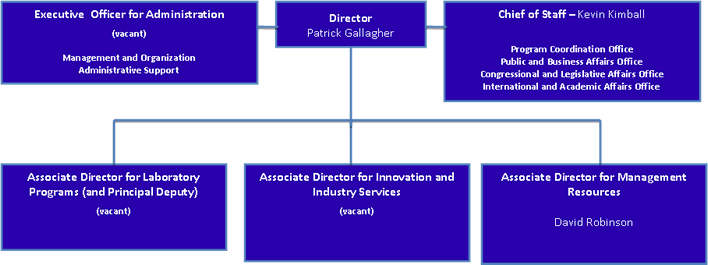NIST Realignment Fact Sheet
Published Sept. 28, 2010
Overview:
After 20 years with its research components aligned largely by scientific disciplines, NIST is realigning its laboratories according to a mission-based structure. The new structure is effective on Oct. 1, 2010.
The realignment will allow more day-to-day operational decisions to be made by the major laboratory units and will improve interdisciplinary research by making it easier to form research groups with the needed expertise. The change will also provide greater accountability by ensuring that individual laboratories are responsible for all major products and services that meet NIST's specific mission authorities, from the research to develop them to the delivery of products and services to customers.
Reason for the realignment:
NIST's current structure—with 18 laboratory, extramural program, and administrative units—is unwieldy. The NIST director has a large number of units reporting directly to him, making it difficult to manage the agency efficiently.
While an organization's structure is just one tool for accomplishing an agency's mission, the new structure is expected to:
- strengthen the NIST Director's Office with a core, senior career leadership team;
- enhance accountability by assigning specific organizational units with specific portions of NIST's congressionally directed missions and authorities; and
- empower NIST senior managers by ensuring they have the resources and authority to carry out clearly assigned mission responsibilities.
The reorganization consists of two main components:
- Replacing the current single Deputy Director position with three career associate directors responsible for NIST laboratory, extramural, and administrative programs.
- Reducing the number of laboratory units from 10 to 6.
The realignment will not change the focus of NIST programs. It will make NIST more effective in delivering its products and services to its customers. While the new names of the NIST individual mission-based laboratories are broader than the current scientific discipline laboratory names, the critical functions done by the current laboratories will continue under the new structure. For example, the President's FY 2011 budget request for NIST includes about $70 million in increased funding for manufacturing-related research and support services. While "manufacturing" does not appear in the names of any of the new laboratories, research and services supporting manufacturing are a significant element in all six of the new laboratory units.
The restructuring is occurring during a period of growth for NIST. President Obama has committed to doubling NIST's laboratory budget by 2017. The reorganization plan does not include any Reductions in Force (RIFs).
The NIST realignment plan has been approved by the Administration and the Congress. Organizational charts for the new NIST structure are provided, as well as summary functional statements describing the six laboratory units.
Material Measurement Laboratory
Serves as the national reference laboratory for measurements in the chemical, biological, and material sciences through activities ranging from fundamental and applied research on the composition, structure, and properties of industrial, biological, and environmental materials and processes to the development and dissemination of certified reference materials, critically evaluated data, and other programs to enable assurance of measurement quality.
Includes NIST-wide mission responsibility for:
- Standard Reference Materials and Reference Materials
- Standard Reference Data
- Thermodynamics Research Center
Physical Measurement Laboratory
Develops and disseminates the national standards of length, mass, force and shock, acceleration, time and frequency, electricity, temperature, humidity, pressure and vacuum, liquid and gas flow, and electromagnetic, acoustic, ultrasonic, and ionizing radiation through activities ranging from fundamental measurement research to provision of measurement services, standards, and data.
Includes NIST-wide mission responsibility for:
- Weights and Measures
- NVLAP
- Calibration Services
- Metric Program
- Precision Measurement
- Physical Reference Data
Engineering Laboratory
Develops and disseminates advanced manufacturing and construction technologies, guidelines, and services to the U.S. manufacturing and construction industries through activities including measurement science research, performance metrics, tools and methodologies for engineering applications, and critical technical contributions to standards and codes development.
Includes NIST-wide mission responsibility for:
- Fire research
- National Earthquake Hazard Reduction Program
- National Windstorm Impact Reduction Program
- National Construction Safety Team
- Collaborative Manufacturing Research Pilot Program
- Manufacturing Fellowship Program
Information Technology Laboratory
Develops and disseminates standards, measurements, and testing for interoperability, security, usability, and reliability of information systems, including cyber security standards and guidelines for federal agencies and U.S. industry, supporting these and measurement science at NIST through fundamental and applied research in computer science, mathematics and statistics.
Includes NIST-wide mission responsibility for:
- Federal Information Security Management Act
- Health Information Technology
- Help America Vote Act
Center for Nanoscale Science and Technology
Safely and reliably operates a national, shared-use facility for nanoscale fabrication and measurement and develops innovative nanoscale measurement and fabrication capabilities to support researchers from industry, academia, NIST, and other government agencies in nanoscale technology from discovery to production.
Center for Neutron Research
Safely and reliably operates a national user facility providing neutron-based measurement capabilities to U.S. researchers from industry, academia, NIST, and other government agencies in support of materials research, neutron imaging, chemical analysis, neutron standards, dosimetry, and radiation metrology.
 |
NIST Realigned Organizational StructureEffective, Oct. 1, 2010, the new NIST organizational structure replaces a single Deputy Director position with three associate directors responsible for laboratory programs, innovation and industry services, and management resources. |
 |
NIST Realignment: Structure of the Laboratory ProgramsThe realigned structure reduces the number of laboratories from 10 to 6. The new structure includes: two metrology laboratories—the Material Measurement Laboratory and Physical Measurement Laboratory; two technology laboratories—the Engineering Laboratory and Information Technology Laboratory; and two user facilities— the Center for Nanoscale Science and Technology and the NIST Center for Neutron Research. |
 |
NIST Realignment: Structure of the Extramural ProgramsThe Associate Director for Innovation and Industry Services oversees NIST's three major extramural programs including the newly renamed Baldrige Performance Excellence Program, the Hollings Manufacturing Extension Partnership, and the Technology Innovation Program. The AD for Innovation and Industry is also responsible for NIST's technology transfer, cooperative research, and patent programs; economic analysis studies; and selection and monitoring of construction grants and other types of extramural awards. |
 |
NIST Realignment: Structure of the Administrative ProgramsThe Associate Director for Management Resources is responsible for activities such as budgeting, accounting, human resources, facilities management, information technology, safety and other administrative services that assist NIST programs and offices. |
 |
NIST DirectorateThe NIST Director's Office includes two staff officers, the Executive Officer for Administration and the Chief of Staff, as well as the three associate directors described above. |

